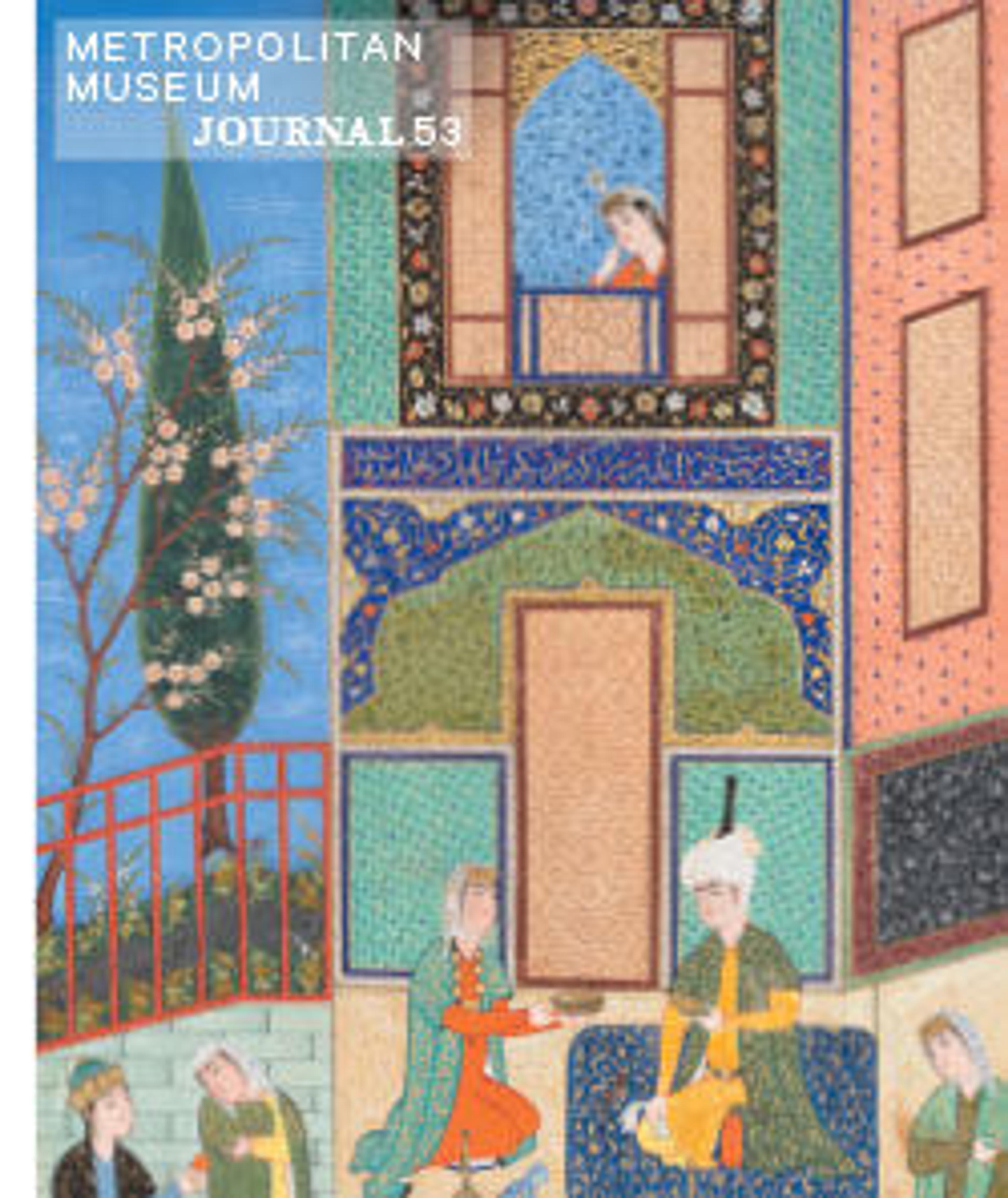Cylinder seal and modern impression: male worshiper, dog surmounted by a standard
Although engraved stones had been used as early as the seventh millennium B.C. to stamp impressions in clay, the invention in the fourth millennium B.C. of carved cylinders that could be rolled over clay allowed the development of more complex seal designs. These cylinder seals, first used in Mesopotamia, served as a mark of ownership or identification. Seals were either impressed on lumps of clay that were used to close jars, doors, and baskets, or they were rolled onto clay tablets that recorded information about commercial or legal transactions. The seals were often made of precious stones. Protective properties may have been ascribed to both the material itself and the carved designs. Seals are important to the study of ancient Near Eastern art because many examples survive from every period and can, therefore, help to define chronological phases. Often preserving imagery no longer extant in any other medium, they serve as a visual chronicle of style and iconography. The modern impression of the seal is shown so that the entire design can be seen.
Seal-carving styles known from the Kassite period draw upon both the rich historical traditions of Mesopotamia and the contemporary art of the broader ancient Near East. The so-called First Kassite Style harkens back to the Old Babylonian presentation scene, in which a worshiper appears before a deity, often accompanied by an inscription, but is distinguished from this earlier style by lengthy inscriptions and elongated figures.
On this First Kassite Style cylinder a male figure wearing a rounded cap and a long fringed dress stands behind an open-mouthed dog who wears a collar and has a standard on his head. The dog and standard may represent a statue or other divine symbol. The male figure is in a devotional pose and probably represents a worshipper. A five-line Sumerian inscription, carved using ancient forms of the cuneiform signs, begins behind the worshipper’s back. It reads:
Naramtum
daughter of Ahuni
son of Dagan-Malik
servant of (the deities) Nergal
(and) Mamitum
Seal-carving styles known from the Kassite period draw upon both the rich historical traditions of Mesopotamia and the contemporary art of the broader ancient Near East. The so-called First Kassite Style harkens back to the Old Babylonian presentation scene, in which a worshiper appears before a deity, often accompanied by an inscription, but is distinguished from this earlier style by lengthy inscriptions and elongated figures.
On this First Kassite Style cylinder a male figure wearing a rounded cap and a long fringed dress stands behind an open-mouthed dog who wears a collar and has a standard on his head. The dog and standard may represent a statue or other divine symbol. The male figure is in a devotional pose and probably represents a worshipper. A five-line Sumerian inscription, carved using ancient forms of the cuneiform signs, begins behind the worshipper’s back. It reads:
Naramtum
daughter of Ahuni
son of Dagan-Malik
servant of (the deities) Nergal
(and) Mamitum
Artwork Details
- Title: Cylinder seal and modern impression: male worshiper, dog surmounted by a standard
- Period: Kassite
- Date: ca. mid-2nd millennium BCE
- Geography: Mesopotamia
- Culture: Kassite
- Medium: Carnelian
- Dimensions: H. 0.97 in. (2.46 cm)
- Credit Line: Gift of The Right Reverend Paul Moore Jr., 1985
- Object Number: 1985.357.44
- Curatorial Department: Ancient West Asian Art
More Artwork
Research Resources
The Met provides unparalleled resources for research and welcomes an international community of students and scholars. The Met's Open Access API is where creators and researchers can connect to the The Met collection. Open Access data and public domain images are available for unrestricted commercial and noncommercial use without permission or fee.
To request images under copyright and other restrictions, please use this Image Request form.
Feedback
We continue to research and examine historical and cultural context for objects in The Met collection. If you have comments or questions about this object record, please complete and submit this form. The Museum looks forward to receiving your comments.
